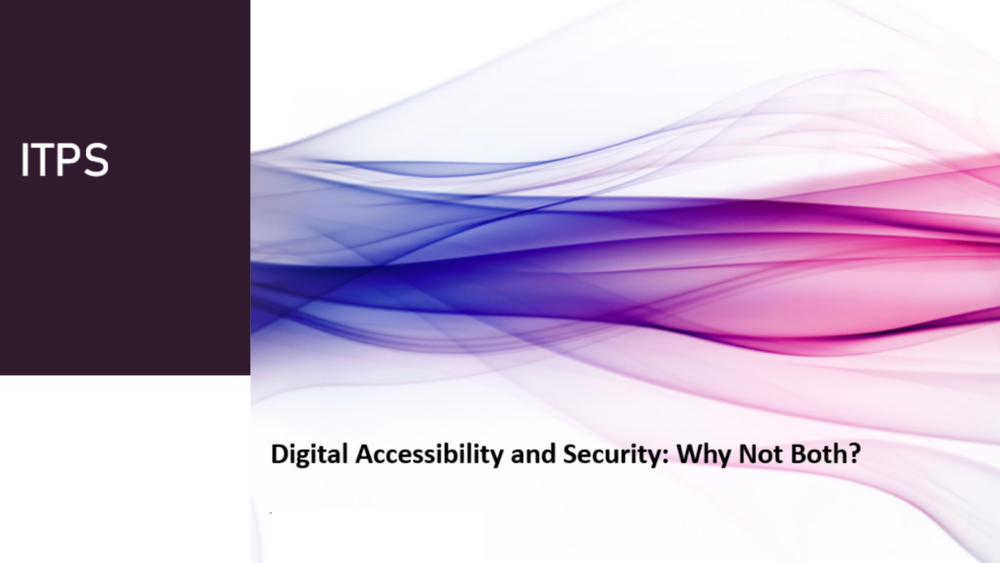By Brendon Phuong. What assistive technologies, policies and tools are the University of California focusing on and why do they matter? Judy Thai, director of Application and Engineering, UC Office of the President and Trevor Finneman, UC Legal principal counsel, UC Office of the President, recently attended the monthly IT Policy and Security Community (ITPS) General Meeting to present their work in this arena and to glean feedback from this committee. Insights from their presentation are provided below.
The practice of digital accessibility and assistive technologies
Digital accessibility is the practice of ensuring that digital content is readily available to everyone, including individuals with disabilities. Disabilities can manifest unexpectedly, making it crucial to design and develop digital products and services in a way that accommodates the diverse needs of users. This approach aims to remove barriers and provide equal access to information and technology, foster inclusivity and ensure that no one is left behind in the digital age.
Assistive technologies, such as screen readers, magnifiers, speech recognition software, joysticks, and captioning tools, are essential tools that enhance digital accessibility for people with disabilities. These technologies enable individuals with varying needs to access, interact with, and navigate digital content and devices effectively.
Accessibility guidelines within the University of California
The accessibility policy mandates that all digital content, whether created or procured, must conform to Web Content Accessibility Standards (WCAG) 2.0 AA standards. Currently, there is an ongoing policy update to align with the more recent standards. This is done in accordance with federal and state government guidelines. This update reflects the University’s commitment to ensuring digital accessibility for all users.
Why should we care about digital accessibility?
Digital accessibility is crucial for three key reasons:
- Equity and inclusion – It promotes equity and inclusion by ensuring that everyone, including individuals with disabilities, can access and participate fully in the digital world.
- Legal requirement – It is a legal requirement, making compliance essential to avoid legal liability and uphold ethical standards.
- Risk Management – It serves as a risk management strategy, protecting organizations from potential legal actions, reputational damage, and customer loss associated with non-compliance. Prioritizing digital accessibility is essential for creating an equitable, compliant, and secure digital environment.
Primary accessibility issues to acknowledge and address
There are several security-related issues that can impact digital accessibility. The following list provides issues to keep in mind as new innovations find ways to break these barriers:
- CAPTCHAs: Even the most advanced versions of CAPTCHA often fail to work for individuals with disabilities, creating accessibility barriers during authentication processes.[CAPTCHA is a test to verify whether the user is human to deter damage and unauthorized access.]
- Password fields: Password fields are often inaccessible to blind users, making it challenging for them to reset or recover their passwords independently.
- Multi-factor authentication (MFA): MFA systems that require personal smartphones for verification can exclude those who may not have access to such devices or the ability to use them effectively. MFA also primarily relies on visual cues, making it inaccessible to users with visual impairments.
- Privacy statements: The lengthy and complex privacy statements that are often encountered online can be daunting and challenging to navigate for individuals with disabilities.
Contacts
Judy Thai
Director of Application Engineering
UC Office of the President
Trevor Finemann
UC Legal Principal Counsel
UC Office of the President
Author
Brendon Phuong
Marketing & Communications Intern
UC Office of the President

